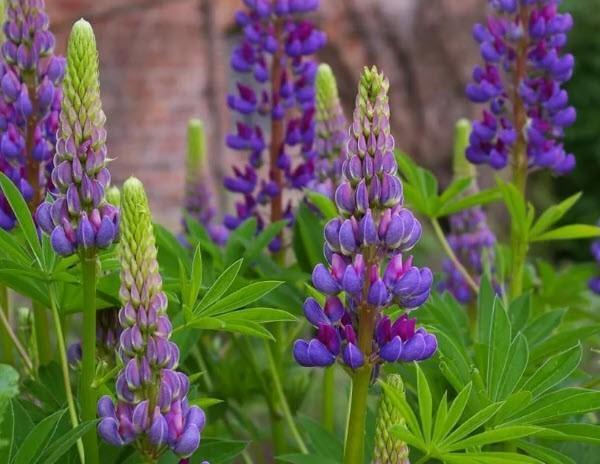How to grow lupine on your site
 Lupine is not only a beautiful flower, but also an excellent siderat. Growing flowers on the site will decorate the area and nourish the soil with useful minerals. There are two types of plants - perennial and annual. Both types are not whimsical in everyday life, and do not cause problems when disembarking. Not everyone knows how to properly grow perennial lupine.
Lupine is not only a beautiful flower, but also an excellent siderat. Growing flowers on the site will decorate the area and nourish the soil with useful minerals. There are two types of plants - perennial and annual. Both types are not whimsical in everyday life, and do not cause problems when disembarking. Not everyone knows how to properly grow perennial lupine.
How to grow lupine
Lupine is grown using seeds. You can buy them at a flower shop or order them online. In the future, the owner will be able to independently collect flower seeds and plant them in open ground. Preplanting seedlings is not required.
If you use seeds from your plants, in the future you can get a color that was not there before.
Of the basic rules for planting lupines, it is worth noting:
- The first sowing is best done in May. At this time of the year, the weather is predominantly warm and the plant will quickly take root. With good care, lupins bloom by the end of the first summer. If the planting is postponed to June or later, the bushes will get stronger in a few months, but most likely there will be no flowers.
- So that the bushes that appear in the future do not have to be replanted, it is recommended to lower the seeds into the soil at a distance of 40-50 cm from each other.
- In order for the plant to endure the winter better, experts recommend cutting off the flowers before the frost begins. This will allow the roots to store more nutrients.
- Perennial lupins can bloom twice in one summer, in order to achieve this, the ear of the plant should be cut off as soon as it fades. Or get rid of the seeds that have appeared. This will give additional strength to the bushes, and he will be able to bloom again.
- Some insects - pests can feed on lupine leaves, in order to avoid this, it is necessary to spray the bush with a special solution. This is best done when the first ears of wheat that have not yet been painted have appeared.
The plant receives food independently from the soil and air. Therefore, additional feeding is not required when planting and further growing lupine. Also, it is highly not recommended to use for fertilization manure, so this will cause the growth of greenery without the appearance of inflorescences.
How to plant lupines
It is best to plant lupine directly into the soil and in the place where it will grow every year in the future. But if too many seeds have been sown, and the bushes have sprouted extremely densely, the plant should be planted.
This should be done at an early age of the flower, when the first 2 leaves only appear (about 10-15 cm). To do this, you need to dig up a bush with a long spatula from all sides, and then gently get it out, and transplant it into a deep hole prepared in advance.
Transplanted lupins need to be watered frequently and monitored for safety. For the first few days, you can cover the plant with a plastic container or any other pot so that it is not damaged by rain, wind, or direct sunlight.
Growing lupine will not present any special problems and difficulties. And in order to achieve multi-colored splendor, various varieties can be used for planting.